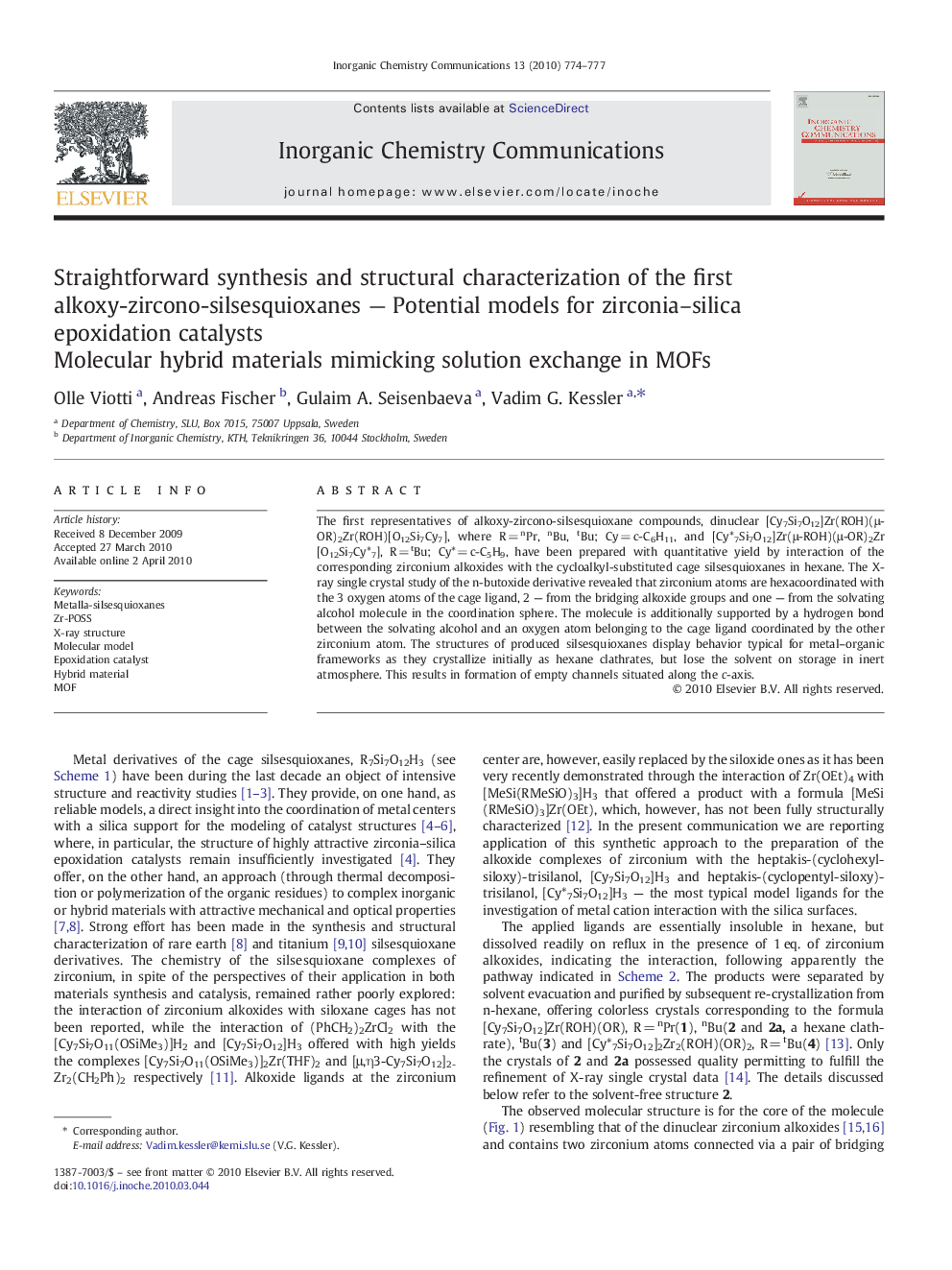| کد مقاله | کد نشریه | سال انتشار | مقاله انگلیسی | نسخه تمام متن |
|---|---|---|---|---|
| 1304354 | 974819 | 2010 | 4 صفحه PDF | دانلود رایگان |

The first representatives of alkoxy-zircono-silsesquioxane compounds, dinuclear [Cy7Si7O12]Zr(ROH)(μ-OR)2Zr(ROH)[O12Si7Cy7], where R = nPr, nBu, tBu; Cy = c-C6H11, and [Cy*7Si7O12]Zr(μ-ROH)(μ-OR)2Zr[O12Si7Cy*7], R = tBu; Cy* = c-C5H9, have been prepared with quantitative yield by interaction of the corresponding zirconium alkoxides with the cycloalkyl-substituted cage silsesquioxanes in hexane. The X-ray single crystal study of the n-butoxide derivative revealed that zirconium atoms are hexacoordinated with the 3 oxygen atoms of the cage ligand, 2 — from the bridging alkoxide groups and one — from the solvating alcohol molecule in the coordination sphere. The molecule is additionally supported by a hydrogen bond between the solvating alcohol and an oxygen atom belonging to the cage ligand coordinated by the other zirconium atom. The structures of produced silsesquioxanes display behavior typical for metal–organic frameworks as they crystallize initially as hexane clathrates, but lose the solvent on storage in inert atmosphere. This results in formation of empty channels situated along the c-axis.
Interaction of closo-silsesquioxanes with zirconium alkoxides in hexane offers an efficient approach to the first representatives of the family of alkoxy-zircono-silsesquioxanes. They crystallize as hexane clathrates, but lose the solvent on storage — a behavior typical of metal–organic frameworks.Figure optionsDownload as PowerPoint slide
Journal: Inorganic Chemistry Communications - Volume 13, Issue 6, June 2010, Pages 774–777